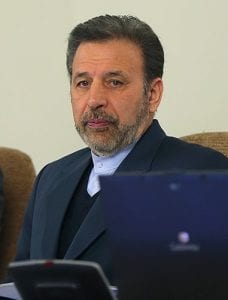
In what appears to be another schedule slippage in the Iranian space programme, the Iranian Minister for Communication and Information Technology, Mahmoud Vaezi, announced that three domestically built satellites will be launched by 2018.
The first satellite scheduled for launch is the Dousti (Farsi for Friendship), also known as SharifSat, a micro-sized remote sensing satellite that weighs 50 kilograms and was designed and built by the Iran Space Agency’s Remote Sensing Laboratory.
“One of the satellites – Sharif Sat or Dousti will be put into orbit by the end of the year, while two more satellites will be launched by the end of the next Iranian calendar year,” said Minister Vaezi to Iranian journalists. Vaezi was referring to the end of the Iranian calendar year that takes place on 20 March 2017.
Iranian officials have been announcing the imminent launch of Dousti throughout most of 2016, indicating that there might be problems with readying an Iranian Simorgh space launch vehicle (SLV), or securing a place on a manifest of a Russian or Chinese SLV. In either case, Doosti has been ready for launch for many months now.
The delay in Doosti’s launch also suggests that ultimately Iranian officials may have to choose between prioritising a domestic satellite manufacturing capability or a domestic space launch capability as resources for its space programme become tighter.
Vaezi made no mention of the names and functions of the other two satellites to be launched by 20 March 2018, the end of the 2018 calendar year in Iran.
Original published at: http://spacewatchme.com/2016/12/vaezi-announces-launch-three-iranian-satellites-2018/
 SpaceWatch.Global An independent perspective on space
SpaceWatch.Global An independent perspective on space

